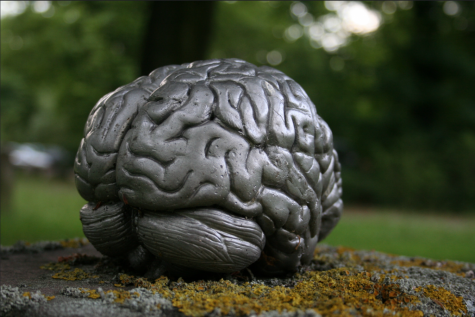Glioblastoma: Developing a Treatment
May 6, 2018
 In today’s political arena, few politicians have elicited more polarized opinions in the American people than Senator John McCain, whose spars with a refractory president have left advocates more supportive than ever before. Regardless of one’s views on political issues, something that transcends political boundaries is a scenario all too familiar for grieving families: his diagnosis ten months ago with glioblastoma, a highly malignant brain cancer.
In today’s political arena, few politicians have elicited more polarized opinions in the American people than Senator John McCain, whose spars with a refractory president have left advocates more supportive than ever before. Regardless of one’s views on political issues, something that transcends political boundaries is a scenario all too familiar for grieving families: his diagnosis ten months ago with glioblastoma, a highly malignant brain cancer.
In July of 2017, McCain went in for surgery at the Phoenix Mayo Clinic Hospital to address a blood clot situated above his eye. The surgery, a craniotomy, which involved the removal a portion of skull to access the brain, grew more and more severe as it progressed. Noticing something irregular, his doctors decided to conduct an analysis of the blood clot and discovered a bombshell, that it signified the presence of glioblastoma. To a normal person, this medical jargon means little, but to a trained professional it portends doom.
Primary brain cancers, glioblastomas most commonly emerge in older men above the age of fifty, though, as with every type of deadly cancerous tumor, their ultimate cause is unknown. This cancer is not McCain’s first, as he previously endured a melanoma, a malignant skin cancer whose connection to glioblastoma researchers have begun to analyze, but it will likely be his last. This conclusion stems from how glioblastomas, gliomas (brain tumors) of the most severe, grade four, level of brain cancer malignancy, form. Originating from astrocytes, the star-shaped glial cells of the brain that regulate ion concentrations across neurons and contribute to the growth of synapses, glioblastomas quickly metastasize to other parts of the brain. The cancer quickly consumes other types of cells, killing them and paralyzing the victim. This means that multiple treatment therapies, including surgery, chemotherapy, and radiation, must be used in tandem to combat the cancer, as one method used alone proves ineffective. Despite modern treatment, the brain still remains highly vulnerable to damage from treatment and the tumor’s tentacles make it impossible to remove the tumor surgically or by any other means. Moreover, a drug that penetrates the blood brain barrier has, until now, not existed. When combined, these factors impinge on the median survival period*, which is 14.6 months.
Despite the grim outlook, modern advances have greatly improved the prognosis of glioblastoma. Recently, the discovery of Berubicin, which occurred this past year, allowed oncologists to pass through the blood-brain barrier and specifically target Glioblastoma tumors. For those who can access it, modern treatment offers prolonged life and lessened pain; for those who can afford them, pilot experiments offer the astonishing possibility of five years of life. Today, research conducted in the field of immunotherapy (the attempt to suppress the immune system by use of drugs) has produced promising results. However, until researchers discover a successful technique to combat Glioblastomas, which requires a better understanding of the elusive disease of cancer, they will continue to be fatal and the number one cause of deaths for adults from a brain cancer. For Senator Ted Kennedy and Vice President Emeritus Joe Biden’s son Beau, treatment did not come soon enough, but perhaps for the next generation it will.
*Median survival period is the amount of time of life following diagnosis that half of patients do better than and half of patients do worse than
https://www.cbsnews.com/news/john-mccain-brain-tumor/
https://www.hopkinsmedicine.org/healthlibrary/test_procedures/neurological/craniotomy_92,P08767
http://www.abta.org/brain-tumor-information/types-of-tumors/glioblastoma.html

